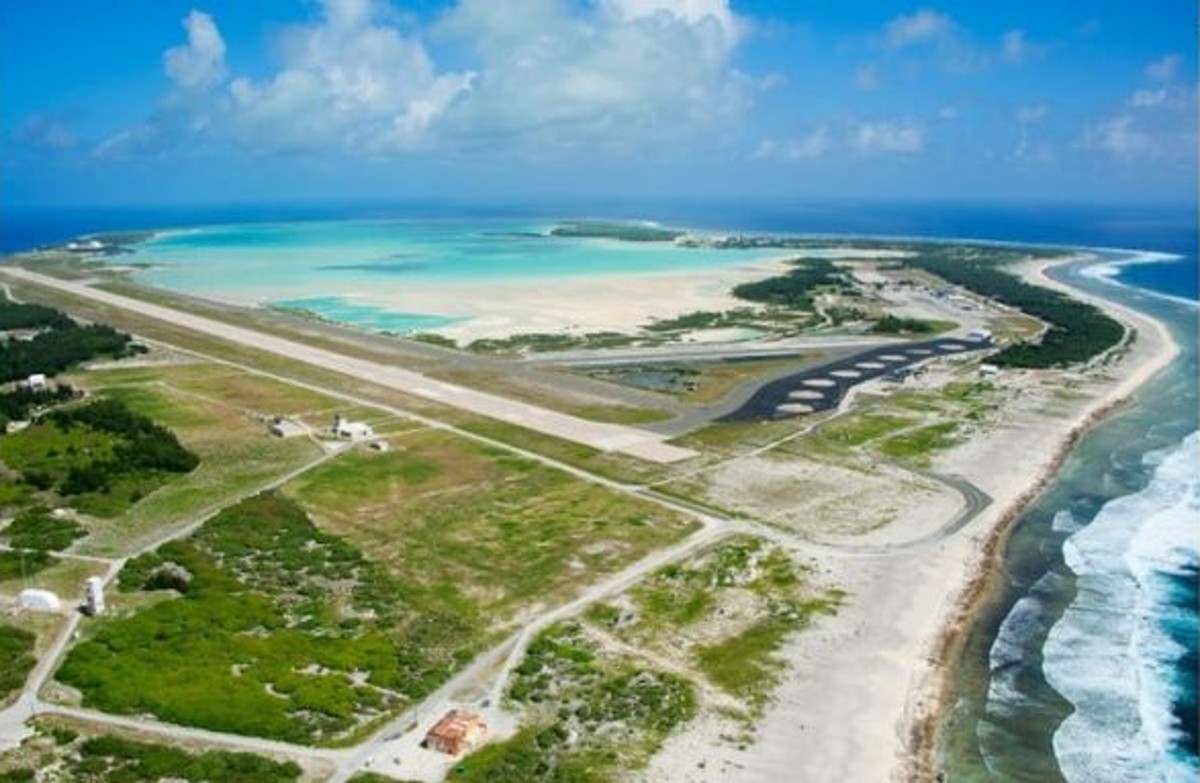From Ecocide Awareness NZ
Staff from New Zealand Dept of Conservation are often employed as ‘consultants’ for overseas ‘pest’ eradication projects. One example of such an eradication attempt comes from Wake Atoll, known as ‘Wake Island’ – which is between Hawaii and Guam in the northern Pacific Ocean. It is made up of Wake, (525 ha), Peale (95 ha), and Wilkes Islands (76 ha).
Wake is an unincorporated U.S. territory that is managed by the Department of Defense, U.S. Air Force. About 70 people reside on Wake (military personnel and contractors). Wake has approximately 19 km of coastline and is an important breeding area for many species of seabirds.Importantly, the coastline is also fished by the local residents for sport and food.
In 2012 an aerial brodifacoum poisoning operation took place over the islands to try to eradicate rats. How long brodifacoum persists in the environment is unclear, but we know it can potentially affect the food chain. These residues may impact on fish that are caught by Wake Island residents for sport and consumption. Three months after the poisoning, 5 out of 48 samples had “detectable levels” of poison – toxicologists therefore recommended a 942 day fishing ban after initial testing was done. But how much longer would the pesticide be in the food chain?
In 2015 – THREE YEARS AFTER this aerial operation of brodifacoum – samples from various marine life were taken. The scientists found that some fish (1 of 8 bluefin trevally, and 4 of 4 blacktail snapper, all from within a lagoon) had low but detectable levels of brodifacoum residues.
The scientists suggest that outcomes from their investigation should provide a comprehensive idea of the risks of contamination in marine life over the longer term from using pesticides aerially. In the article, the authors state “All reasonable efforts should be made to minimize unnecessary environmental and nontarget exposures (e.g., through precise application methods) and all risk assessments must consider the specific context of proposed action [poisoning the environment].”
However, an aerial distribution from helicopter of a lethal poison can NEVER be ‘precise’. The environment and the residents’ health have been put at risk.Reference: Siers, Shane R.; Shiels, Aaron B.; Volker, Steven F.; Rex, Kristen; and Pitt, William C., “Brodifacoum residues in fish three years after an island-wide rat eradication attempt in the tropical Pacific” (2020). USDA National Wildlife Research Center – Staff Publications. 2313.https://digitalcommons.unl.edu/icwdm_usdanwrc/2313
Kathy White says: “Remember the Hauraki Gulf brodifacoum poison drop? The dead dolphins, penguins, dogs and toxic sea-slugs? And the DOC man interviewed on TV, lying about having tested the penguins and them being negative. Fortunately there was an astute journalist who probed and discovered they hadn’t tested them – they had just examined them. Years later, in Penny Fisher’s journal articles, it talked about detecting brodifacoum in the penguins and them thinking the penguins may have died of starvation. They did later studies on anticoagulant rodenticides in penguins and found more than 50% of South Island test subjects had at least one anticoagulant in them.”
Image 1: Wake Island aerial view. Source: Pinterest
Image 2: Brodifacoum baits Source: Wellington Council
#publichealth#pesticide#brodifacoum#ban1080#contamination#healthandsafety#toxicology#ecology#foodsafety#cleanwater

 RSS Feed
RSS Feed















 January 16th, 2021
January 16th, 2021  Awake Goy
Awake Goy 
 Posted in
Posted in  Tags:
Tags: 













